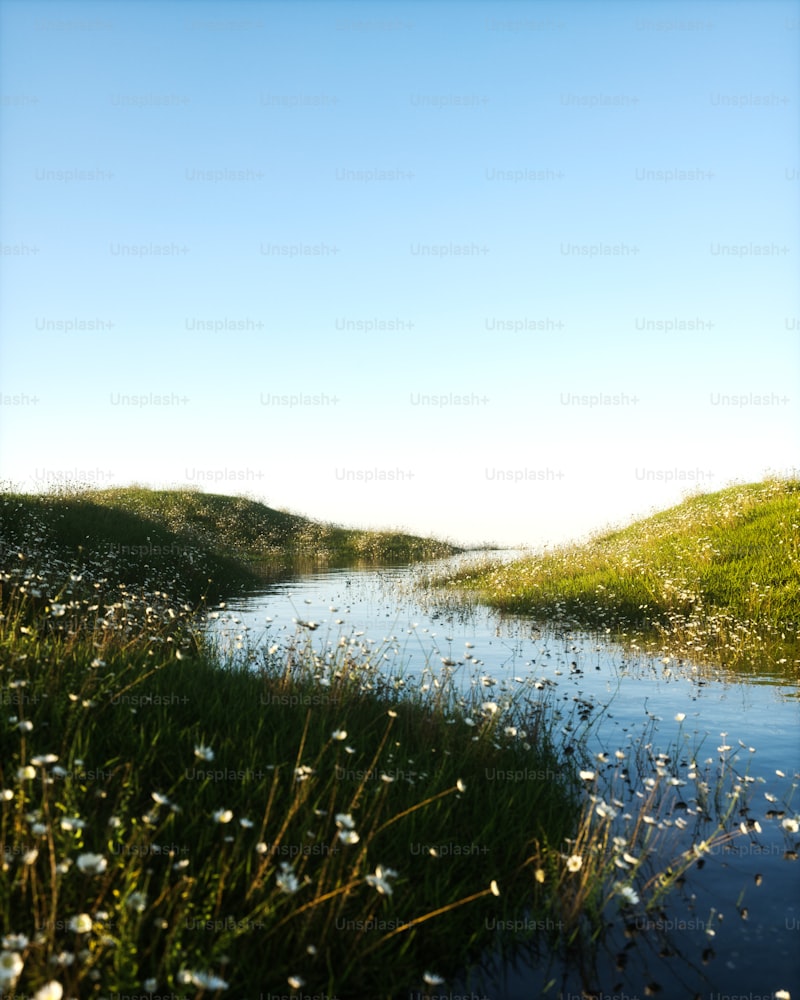Seagrasses, with their slender blades swaying gently in the currents, act as a natural carbon sink, absorbing vast amounts of carbon dioxide from the atmosphere. Much like terrestrial forests, these submerged meadows are essential in mitigating the impacts of global warming by storing carbon in their soils and biomass.
The dynamics within seagrass ecosystems are intricately intertwined with evolutionary processes and ecological interactions. They demonstrate remarkable adaptability to environmental changes, evolving over millennia to thrive in varying water depths, salinity levels, and sediment types. This adaptability not only underscores their resilience but also highlights their sensitivity to disturbances such as coastal development, pollution, and climate variability.
Beyond their role in carbon sequestration, seagrass meadows serve as nursery grounds for countless marine species, including commercially important fish and crustaceans. They provide habitat and refuge for juvenile marine organisms, offering protection from predators and enhancing biodiversity along coastlines worldwide.
The interplay between ecology and evolution in seagrass meadows is a testament to nature’s intricate balance and resilience. As these ecosystems face increasing threats from human activities, understanding their eco-evolutionary dynamics becomes paramount for conservation efforts. By safeguarding seagrass habitats, we not only preserve biodiversity and support fisheries but also bolster coastal resilience and mitigate climate impacts on a global scale.
Unraveling Nature’s Puzzle: How Eco-evolutionary Dynamics Shape Seagrass Meadows
Seagrass meadows, those lush underwater gardens, hold more mysteries than meets the eye. Beneath the serene surface of coastal waters, a dynamic interplay of ecological and evolutionary forces orchestrates the flourishing of these vital ecosystems. Let’s dive into how these intricate dynamics sculpt and sustain seagrass meadows.
At their core, seagrasses are marine flowering plants uniquely adapted to life submerged in saltwater. Their verdant blades sway with the currents, providing essential habitats and food sources for a myriad of marine life, from tiny crustaceans to majestic sea turtles.
Eco-evolutionary dynamics refer to the reciprocal relationship between ecological interactions and evolutionary processes over time. In seagrass meadows, this dance of life unfolds as a complex tapestry. Grazing creatures like dugongs and sea urchins shape the meadows by consuming seagrass shoots, influencing the plant’s growth patterns and genetic diversity. In response, seagrasses evolve defense mechanisms, altering their physiology or biochemical composition to deter grazers and enhance survival.
The health of seagrass meadows isn’t just a local affair; it resonates globally. These underwater ecosystems sequester carbon dioxide from the atmosphere more efficiently than terrestrial forests, playing a crucial role in mitigating climate change. Furthermore, they stabilize coastlines, reducing erosion, and act as nurseries for juvenile fish, bolstering fisheries productivity.
But seagrass meadows face threats on multiple fronts. Human activities such as coastal development, pollution, and climate change endanger their delicate balance. Rising water temperatures and ocean acidification disrupt the intricate eco-evolutionary interactions within these ecosystems, challenging their resilience and survival.
Understanding the eco-evolutionary dynamics of seagrass meadows is not merely academic but imperative for conservation efforts. Conservationists and scientists strive to safeguard these critical habitats through marine protected areas, sustainable coastal development practices, and community engagement.
As we navigate the complexities of our changing planet, seagrass meadows stand as a testament to nature’s resilience and interconnectedness. They remind us of the profound influence of eco-evolutionary dynamics in shaping and sustaining life beneath the waves.
Adapt or Disappear: The Thriving Ecosystems of Seagrass Meadows
Seagrasses are not just ordinary underwater plants; they are ecological powerhouses. They anchor themselves in soft sediments, forming dense underwater carpets that provide shelter and food for a myriad of marine creatures. These meadows act as nurseries for juvenile fish, offering them protection from predators until they are mature enough to venture into open waters. For crustaceans like crabs and shrimp, seagrass beds serve as hunting grounds where they can scuttle about in search of prey.
But the benefits of seagrass meadows extend far beyond their immediate inhabitants. They contribute significantly to the health of coastal ecosystems by stabilizing sediments and reducing coastal erosion. Their dense root systems trap organic matter and particles suspended in the water, improving water clarity and quality. In fact, seagrass meadows are so effective at filtering water that they are often referred to as the “lungs of the sea,” purifying the surrounding environment much like terrestrial forests do.
However, these vital ecosystems are facing numerous threats in today’s rapidly changing world. Pollution, coastal development, and climate change pose significant risks to seagrass meadows worldwide. Rising water temperatures and ocean acidification disrupt the delicate balance these plants require to thrive, leading to declines in seagrass coverage in many regions.
Conservation efforts are crucial to safeguarding seagrass ecosystems for future generations. By reducing nutrient pollution, establishing marine protected areas, and promoting sustainable fishing practices, we can help preserve these invaluable habitats. Public awareness and community involvement are also essential in advocating for the protection of seagrass meadows and the marine life they support.
From Evolution to Preservation: Understanding Seagrass Meadows’ Crucial Role
Imagine these meadows as bustling cities of the sea, bustling with life. They provide shelter and food for a diverse array of marine creatures, from tiny fish to majestic sea turtles. Their intricate root systems stabilize sediment and reduce coastal erosion, acting as natural barriers against the pounding waves.
But their importance stretches beyond biodiversity. Seagrass meadows act as carbon sinks, absorbing carbon dioxide from the atmosphere at a rate much higher than rainforests. This helps mitigate climate change by reducing greenhouse gases in our atmosphere, making them a crucial ally in our fight against global warming.
Their evolutionary journey spans millions of years, adapting to changing oceanic conditions. Today, they face numerous threats, including coastal development, pollution, and climate change. Understanding these challenges is crucial to their preservation.

Preserving seagrass meadows requires concerted efforts on multiple fronts. Coastal communities and governments must implement sustainable fishing practices and enforce marine protected areas. Educating the public about their importance can foster a sense of stewardship, encouraging responsible tourism and recreational activities.
Survival Strategies: How Seagrass Meadows Adapt to Changing Environments
Seagrass meadows are fascinating ecosystems teeming with life, but they face constant challenges from environmental changes. These underwater gardens not only provide shelter for numerous marine species but also play a crucial role in stabilizing coastal areas and improving water quality. So, how do these resilient plants adapt to shifting environments?
One remarkable survival strategy of seagrass meadows lies in their ability to alter their physiology. When faced with changes in water temperature or salinity, these plants can adjust their metabolism and nutrient uptake. It’s like having an internal thermostat that keeps them thriving despite external fluctuations. This adaptability helps seagrasses maintain their health and continue to support marine life.
Moreover, seagrass meadows are masters of resilience through reproduction. They can propagate both sexually, through flowering and seed production, and asexually, by sending out rhizomes that sprout new shoots. This dual approach ensures that even if conditions become challenging in one area of the meadow, new growth can emerge elsewhere, securing the meadow’s overall survival.

Another ingenious tactic seagrass employs is their interaction with other organisms. Symbiotic relationships with bacteria and fungi help seagrasses acquire essential nutrients or break down harmful substances. It’s akin to a mutual support system where each participant contributes to the health and longevity of the community.
Seagrass meadows are not passive victims of environmental change but active participants in their own survival. Through physiological adjustments, robust reproductive strategies, and symbiotic relationships, these underwater ecosystems demonstrate resilience in the face of adversity. Understanding these adaptation mechanisms is crucial for conservation efforts aimed at preserving these vital habitats for future generations.
Nature’s Architects: Eco-evolutionary Insights from Seagrass Meadows
Seagrass meadows, those sprawling underwater gardens, are not just serene landscapes but vibrant ecosystems teeming with life. Imagine them as bustling cities of the ocean, where each blade of seagrass plays a crucial role in shaping the environment. These meadows, often overlooked, are the unsung heroes of coastal ecosystems, providing a haven for countless marine species.
Why are seagrass meadows so vital? They act as natural filtration systems, trapping sediments and pollutants, thereby maintaining water clarity. This clarity is essential for the survival of many marine creatures, from tiny fish to majestic sea turtles. Moreover, seagrasses are adept at absorbing carbon dioxide from the atmosphere, playing a significant role in mitigating climate change.
But their role goes beyond mere environmental services. Seagrass meadows are dynamic landscapes that evolve over time, adapting to changing environmental conditions. Their ability to withstand tidal currents and waves while providing a stable habitat for marine life showcases nature’s resilience and adaptability.
In these underwater gardens, diversity thrives. From seahorses swaying gently among the seagrass blades to crabs scuttling along the sandy bottom, every corner harbors a unique community. These ecosystems support fisheries, provide coastal protection by reducing erosion, and serve as nurseries for juvenile fish, ensuring the continuity of marine biodiversity.
Studying seagrass meadows offers profound insights into eco-evolutionary processes. Scientists observe how these plants have evolved mechanisms to cope with fluctuating temperatures and salinity levels, shedding light on nature’s strategies for survival in challenging environments.
In essence, seagrass meadows are more than just marine landscapes; they are intricate ecosystems that deserve our admiration and protection. By understanding their eco-evolutionary dynamics, we gain a deeper appreciation for the interconnectedness of life beneath the waves. As stewards of the planet, it is our responsibility to safeguard these natural wonders for future generations to marvel at and learn from.
Beyond the Surface: Exploring the Hidden Interactions in Seagrass Meadows
Imagine a world beneath the waves where seagrass meadows sway gently with the ocean currents, harboring a bustling community of marine life. Beyond their serene appearance, these underwater gardens play a crucial role in marine ecosystems, fostering a delicate balance of interactions that sustain life beneath the surface.
Seagrass meadows, often overlooked, are biodiversity hotspots teeming with life. From tiny seahorses to majestic sea turtles, numerous species find refuge and food among the swaying blades of seagrass. These underwater forests not only provide habitat but also serve as nurseries for many commercially important fish species, supporting fisheries and coastal economies.
But the beauty of seagrass meadows extends beyond their inhabitants. They act as natural filters, improving water clarity by trapping sediment and absorbing nutrients. In this way, they contribute to maintaining the health of adjacent coral reefs and other marine ecosystems.
Moreover, seagrasses are champions of carbon sequestration. Despite covering less than 0.2% of the ocean floor, they are estimated to capture and store carbon dioxide at rates up to 35 times faster than tropical rainforests. This makes them powerful allies in the fight against climate change.
However, these vital ecosystems face numerous threats. Pollution, coastal development, and climate change all pose significant risks to their survival. Understanding and protecting seagrass meadows is crucial not only for their biodiversity but also for the numerous ecological services they provide.
Seagrass meadows are not just a picturesque feature of the ocean landscape but essential ecosystems that deserve our attention and protection. By recognizing their hidden interactions and ecological importance, we can work towards ensuring their preservation for future generations to marvel at and benefit from.
This article aims to capture the essence of seagrass meadows, highlighting their ecological significance and urging readers to appreciate and protect these vital marine habitats.
Frequently Asked Questions
What are eco-evolutionary dynamics and how do they apply to seagrass meadows?
Eco-evolutionary dynamics refer to the interplay between ecological and evolutionary processes over time. In seagrass meadows, these dynamics influence species interactions, genetic diversity, and adaptation to environmental changes. Understanding eco-evolutionary dynamics helps in conserving seagrass meadows by informing management strategies that promote resilience and biodiversity.
How do seagrass meadows contribute to ecosystem resilience through eco-evolutionary processes?
Learn how seagrass meadows enhance ecosystem resilience by facilitating eco-evolutionary processes. Discover their crucial role in supporting biodiversity, stabilizing coastal habitats, and mitigating climate impacts.
What are the key factors influencing evolutionary adaptation in seagrass communities?
Learn about the critical factors driving evolutionary adaptation in seagrass communities. Understand how environmental pressures, genetic diversity, and reproductive strategies shape their ability to thrive and adapt to changing conditions.
How does biodiversity impact eco-evolutionary dynamics within seagrass ecosystems?
Explore how biodiversity influences eco-evolutionary dynamics in seagrass ecosystems, emphasizing its critical role in shaping species interactions, community resilience, and ecosystem stability.
What are the implications of eco-evolutionary dynamics for seagrass conservation and management?
Learn about the implications of eco-evolutionary dynamics for seagrass conservation and management. Understand how these dynamics influence the resilience of seagrass ecosystems to environmental changes and inform strategies for sustainable conservation practices.


